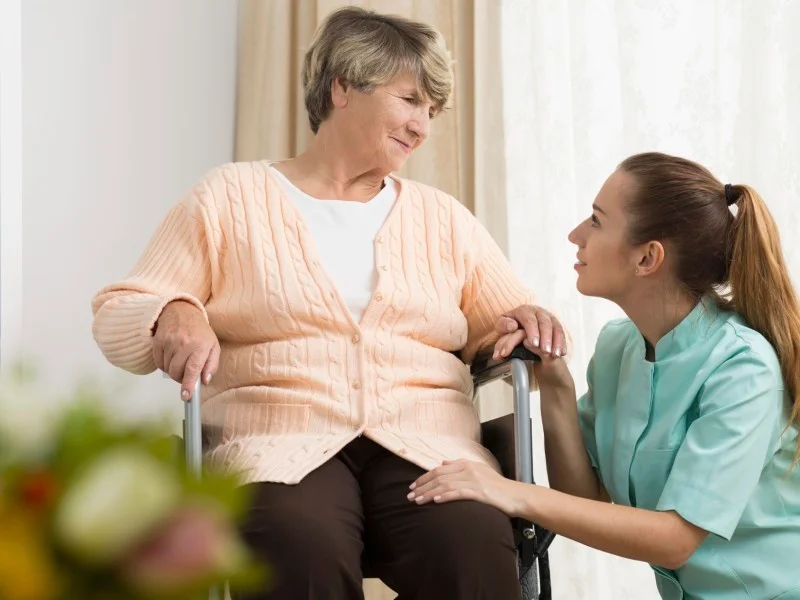Employees of the Grand Rehabilitation and Nursing at Guilderland (and two other Dutchess county nursing homes owned by the same company) recently picketed outside the facility, to protest what they claim are low wages that contribute to “high employee turnover and unsafe staffing.”
The Grand in Guilderland was previously identified as one of the “nation’s worst” nursing homes, after what was considered to be “a history of persistent, serious problems.” While it was removed from that list in 2016, the home continues to maintain a low-quality rating by the Federal Centers for Medicaid and Medicare Services (“CMS”), which oversees and provides funding for a large piece of health care at nursing homes.
While some may criticize the employees, we commend them. Turnover and unsafe staffing levels are two of the most critical factors in nursing care, and each individually can lead to conditions that are dangerous for New York nursing home residents.
THE RISK OF HIGH TURNOVER AT NURSING HOMES
High turnover means that a large portion of the staff of a nursing home is typically new. This often means that they are unfamiliar with the policies and protocols governing nursing conduct at the home. This includes policies relating to observation and care for bed sores (or decubitus ulcers), fall protocol, malnutrition protocol or other safety issues. Unfamiliarity with these types of procedures can lead to negligence in following them, which can lead directly to poor patient care and injuries to patients. Let’s look at an example:
Jean, a 78-year-old patient of Nursing Home X, has started to develop a suspicious red area on her sacrum (the area of her lower back). The protocol in effect at Home X mandates careful observation of the area, consistent rotation of Jean to ensure that she does not spend too much time sitting on the area, and application of specific medication in order to avoid progression of the area to a full-fledged bed sore. The protocol also mandates that the nursing staff immediately request a transfer if Jean’s sore progresses.
Nurse Smith is new and, because of this, she is unfamiliar with the bed sore protocol. Because the facility has had very high turnover, there are no “experienced” staff members to train her. Consequently, she does not receive proper training on the bed sore protocol, and forgets to rotate Jean. Now, what started as a small red spot has become a Stage II bed sore, and Jean is at significant risk for further complications. With lower turnover, Home X would have had staff to train Nurse Smith, and this situation could have possibly been avoided.
THE RISK OF UNDERSTAFFING AT NURSING HOMES
Understaffing at nursing homes presents potentially an even greater risk to patient care. When a home is understaffed it means that nurses are responsible to take care of a greater number of patients. This also means that nurses may be rushed (even more than usual). As we all know, when we rush though things, we tend to not pay attention or miss things. While this may not have dire consequences, say, in writing an email, it can in treating a nursing home patient.
Using the example from above, an understaffed facility, with nurses rushing through treatment and observation, can lead to nurses performing only cursory examinations. We have seen this before. A nurse quickly comes into Jean’s room, does a “once over” examination, and fails to even observe or document the red area on Jean’s back that has now started to look worse. When this goes on for a week, Jean’s condition progresses, and now she’s faced with a Stage II ulcer because of the negligence of the nursing home. This could have been avoided had the facility been properly staffed.
Staffing and turnover are two critical components of good care at Nursing Homes in New York. If you have a family member who has received poor nursing home care, call us today for a consultation.


